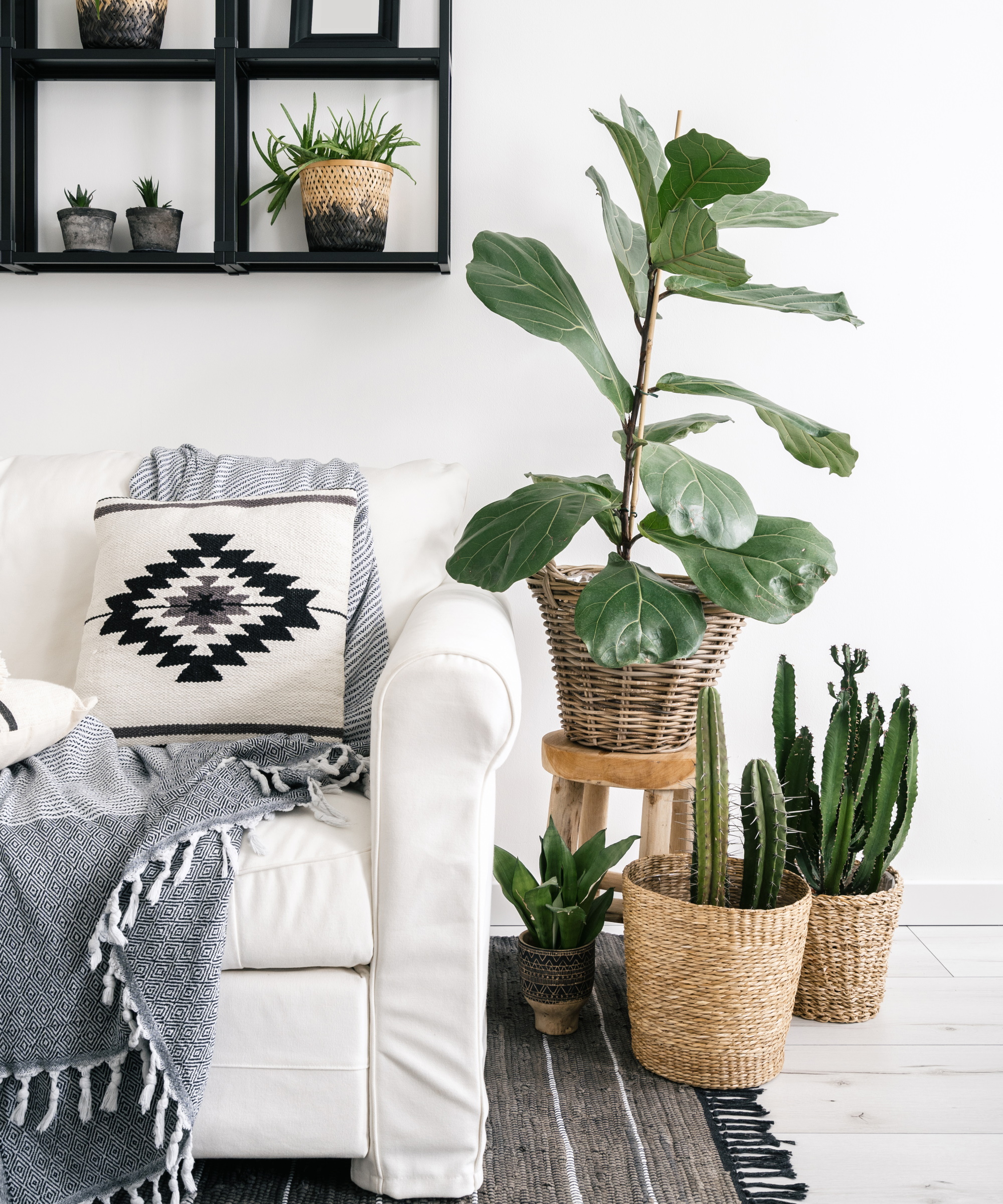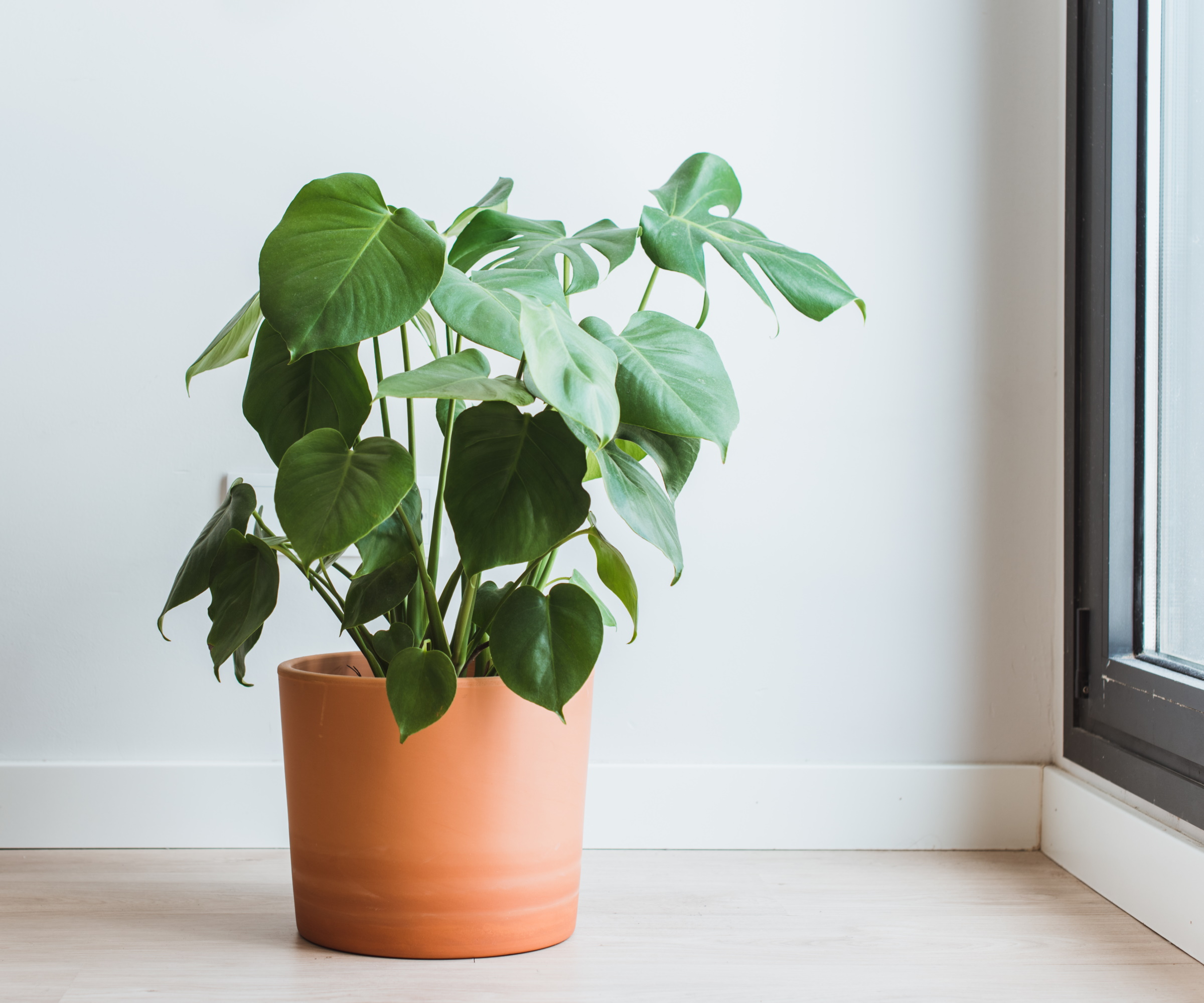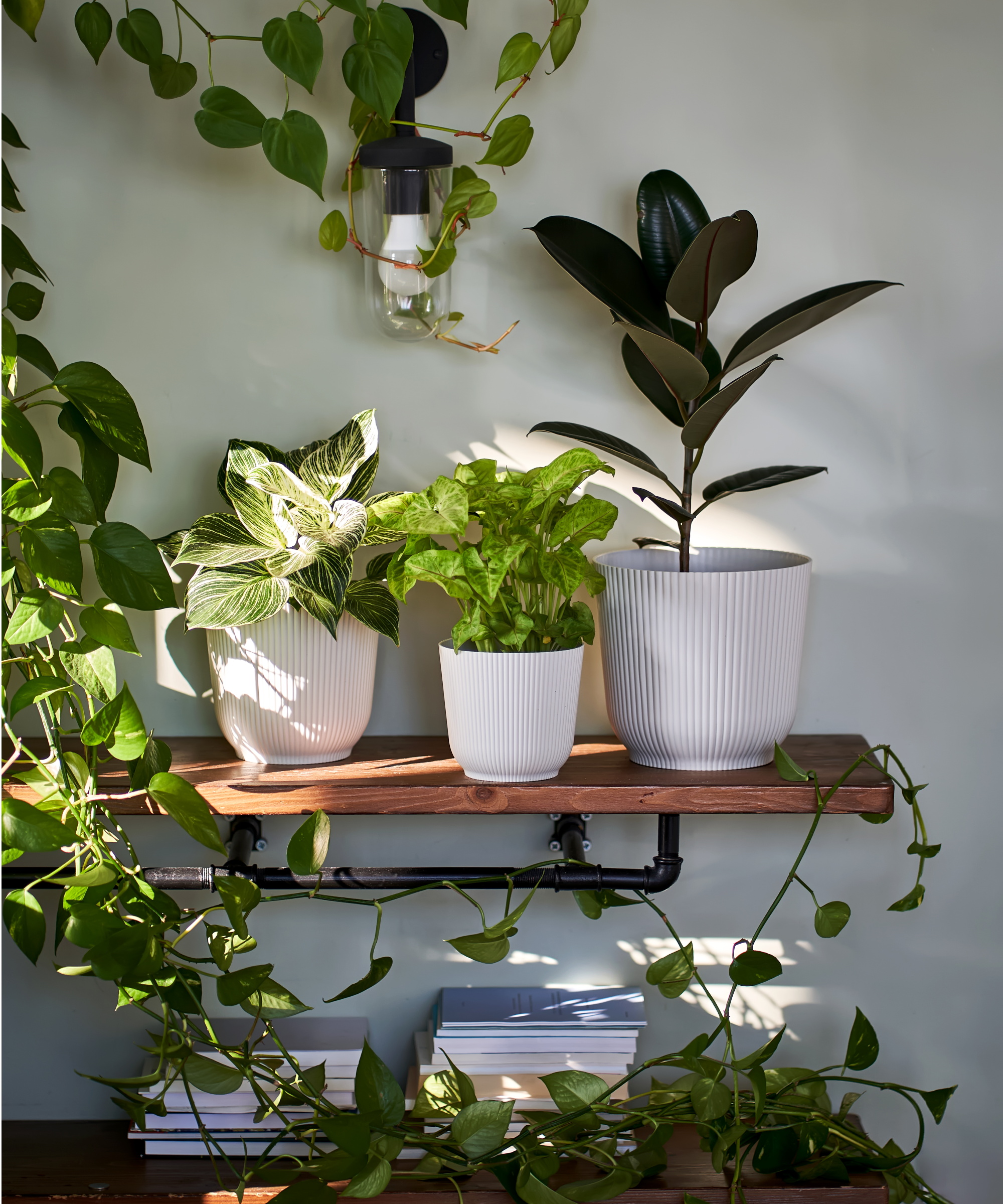
When you have a large houseplant collection like myself, there is no such thing as completely ticking off your houseplant to-do list. There's always a new pest to get rid of, some pruning that needs to be done, and differing water schedules to keep up with. This list of tasks only gets longer when the seasons start to change, which is why I made myself a fall houseplant care checklist.
Even the best indoor plants that prove to be reliable for years need some attention as the temperatures start to drop. In preparation for winter houseplant care, you first need to take some steps to ensure your houseplants get through fall and are fit and ready for the harshest months of the year.
Luckily, fall houseplant care really is quite straightforward. These tasks take just minutes to do and by showing your houseplants some love now, they might even reward you with a couple of extra new leaves before entering winter dormancy.

5 essential fall houseplant care tasks
It's worth reading over our guide to winter houseplant mistakes this season, too, as many of them also apply to the fall months. When it comes to fall houseplant care, though, it's all about encouraging some last new growth, cleaning up your plants from a productive growing season, and preparing them for lower light, colder days.
1. Clean houseplant leaves

If you're anything like me, remembering to clean your houseplant leaves can fall to the back of your mind until you suddenly spot a layer of dust dulling their foliage. And when we're so busy in our gardens in summer, this is often a task neglected until fall.
'Fall is a great time to clean the leaves of your indoor plants. Dust can block your plants from doing all the great photosynthesis they need to. So, before the says get shorter, take a damp microfiber cloth (from Walmart) and wipe down all the leaves,' says Lindsey Chastain, plant expert and founder at The Waddle and Cluck.
'If you have fuzzy leaves like African violets, don't spray or use water. Just use a soft brush (like this one from Amazon)' she adds.
Another reason fall is a good time to clean houseplants that collect dust is because it's about to be a busy time for houseplant pests, as they retreat indoors to the warmth of your home. Check underneath plant leaves for any indoor plant pests (especially spider mites which like dust) and act accordingly to get rid of them.
2. Prune damaged leaves to encourage new growth

The majority of houseplants slow down as we approach winter and enter a period of dormancy, so you're unlikely to spot much new growth then. However, early fall provides a last window of opportunity to gain some extra leaves, while your houseplants are still in the growth season.
Of course, this will depend on the specific type of houseplant you have, but houseplants like snake plant, ZZ plant, and philodendron are often still growing during the first few weeks of fall.
Just like pruning plants in the garden, pruning houseplants can encourage energy to be diverted to putting on new growth. What you don't want to do, however, is make a pruning mistake by taking away too much of the plant. This could stress the plant out ahead of an already challenging season.
Instead, keep your pruning minimal. Focus on removing damaged and dead plant material using essential pruning tools, like these bypass pruning shears from Amazon.
3. Propagate houseplants from cuttings

The lingering warmer temperatures in early fall are worth taking advantage of. Even when temperatures feel cooler outdoors, if it's a sunny fall day my windowsills can get quite toasty. This provides the perfect spot to root some houseplant cuttings and grow new plants for free.
There are some houseplants that are easier to propagate in fall and winter than others, but you can also use methods to speed up houseplant propagation (like with this heat mat from Amazon) to create a more favorable environment for growing houseplants from cuttings during this season.
To aid your success, follow specific advice for the houseplants you are trying to propagate. For example, we have guides on propagating spider plants, propagating monsteras, and propagating tradescantias.
Make sure to also follow the basics to propagating from cuttings: provide plenty of light and warmth, as well as consistent moisture levels.
4. Move your houseplants closer to windows

As mentioned, windowsills can still be warm spots in fall before winter settles in and brings cold drafts and excess condensation. Before the days get too short, reposition your houseplants closer to the windows to soak up more daylight.
Of course, avoid common indoor plant mistakes by keeping in mind just how much light each of your specific plants need and monitoring how cold your windows are getting.
If your windows aren't suitable spots for your houseplants, consider the use of grow lights for houseplants to boost light levels. This grow light from Amazon has a timer function.
5. Boost humidity levels for your houseplants

As the summer temperatures depart, you may find your indoor humidity levels decline (you can monitor this with a humidity meter from Amazon). Tropical indoor plants may suffer from this, so I turn my attention to increasing humidity for indoor plants during fall.
'A simple, natural way to keep your humidity-loving plants healthy is to group three or more together in an area,' suggests Paula Ramirez from Gardino Nursery at Palmstreet. 'As plants release moisture, it concentrates in the space around them, creating a shared microclimate that they will love,' she explains.
You can also use a plant mister (from Amazon) to spritz plant leaves or invest in a humidifier (like this one from Amazon).
Take care to monitor for pests more frequently if placing houseplants close together, as this set-up can make it easier for pest problems to spread.
FAQs
When should I stop fertilizing houseplants in fall?
You should only fertilize houseplants when they are actively growing (typically from spring to early fall). This means by fall your fertilizing should be significantly reduced or even stopped. Looks for signs of slowed down growth to know it's time to stop fertilizing, as well as your plant's soil staying wet for longer.
'Plants can’t properly absorb extra nutrients during the slower growth months, so hold that fertilizer until spring and avoid the dreaded fertilizer burn, where the build-up of excess salts draws moisture out of the plant's roots, turning leaves brown and wilted,' advises Paula Ramirez from Gardino Nursery at Palmstreet.
Fall is not the time to start slowing down with houseplant care. In fact, as things wind down in the backyard, we should be turning more of our attention to our indoor garden. Consider incorporating some of the best houseplants for fall color in your home to create a cozy feeling this season.
Shop houseplant accessories
This houseplant watering kit comes with a narrow-spout watering can, a mister, and a spray bottle, so you can water any size and type of houseplant easily.







